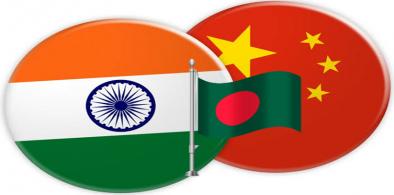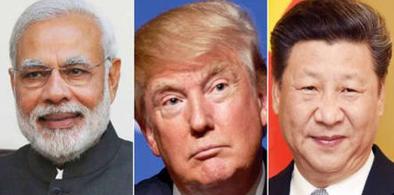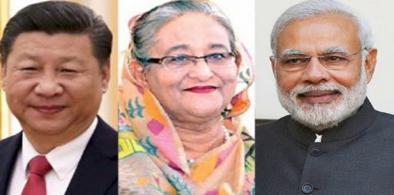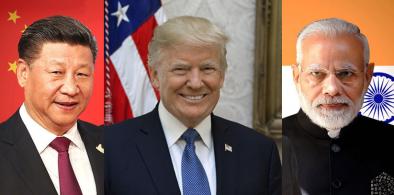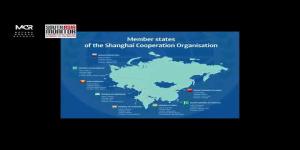India and China will do their best to edge each other out in their competition for dominance in the Bay of Bengal and will try to squeeze an economically weak Bangladesh, writes Lt Gen PR Kumar (retd) for South Asia Monitor
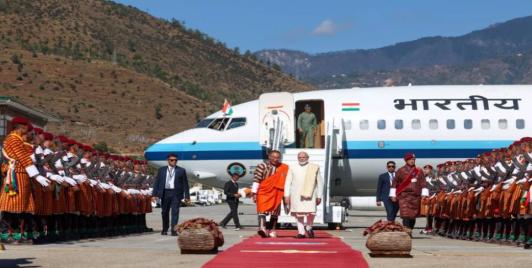
India-Bhutan Relationship Offers A Constructive Model For South Asia And A Peaceful Himalayan Region
Beyond India–Bhutan relations, the visit conveys a wider message to South Asia: cooperation grounded in respect, development, and stability remains essential in an uncertain global environment. As the region evolves, India appears to recognize the importance of maintaining strong partnerships without pressuring smaller neighbors or escalating strategic competition.
Red Fort Blast: India Facing A New Form Of Jihad?
The involvement of four doctors, one of whom allegedly executed the Red Fort blast, indicates a model that blends 'inspired' radicalisation with limited external facilitation. Interactions with certain outfits, Kashmiri terror commanders, and external handlers—if confirmed—point to an infrastructure that encourages attacks while maintaining plausible deniability.
The Nuclear Reckoning: Moment Of Awakening For India
It is time for India, along with like-minded nations across Asia, Africa, and Latin America, to articulate a shared agenda of non-alignment 2.0, not as a posture of neutrality but as a strategy of autonomy. The original Non-Aligned Movement (NAM) emerged from the Cold War’s bipolar tension; its modern counterpart must respond to multipolar volatility.
Endangered Indigenous Languages of South Asia: With Dominant Languages Replacing Mother Tongue, Are They Doomed To Die?
The world over, as is evident from the Atlas of endangered languages, there is a thrust of the dominant languages taking a precedence and most of the endangered languages are likely to disappear by 2100. Soon, possibly in the near future, the grand and great grand-children of the present generation may not be able to tell the story of their own mother tongue. Some of these languages will be lost forever and will only be limited to the pages of gazetteers and history books.
China using proxies to accelerate CMEC and tame Myanmar like Pakistan
Despite all this, Myanmar should expect China to keep tightening its vice-like grip using terrorists, writes Lt Gen Prakash Katoch (retd) for South Asia Monitor
'Witches of Pakistan' takes India by storm, culture transcends politics
Dubbed “Witches of Pakistan,” Churails are about four feisty women who seek to chase and expose men engaged in infidelity, writes Mahendra Ved for South Asia Monitor
Rising COVID cases in Nepal: Time to include pandemic justice as subject in university curricula
So, with the recognition of international obligations, the states could adopt a unanimous disaster/pandemic risk governance system to enable disaster preparedness and risk reduction mechanisms, writes Jivesh Jha for South Asia Monitor
South Asia facing sharp economic downturn due to COVID-19
Within the four sub-regions of South Asia, Bangladesh, India, Nepal, and Bhutan will be doing better as compared to other countries of the region, writes Partha Pratim Mitra for South Asia Monitor
Saudi rift increases Pakistan’s vulnerability
The growing burden of public debt remains a major source of vulnerability for Pakistan, especially when it has to borrow more and more to service its existing obligations, both domestic and foreign, writes N Chandra Mohan for South Asia Monitor
Congress' 'family' dilemma: Democracy bows to dynasty in India's oldest party
Can the ailing Sonia, a supposedly abrasive Rahul and a Priyanka carrying the burden of a tainted husband be inspirational? Or will the 135-year-old party slowly sink into oblivion to fulfil the BJP’s dream of a Congress-mukt (free) India? writes Amulya Ganguli for South Asia Monitor
The US vs China ideological battle, challenge for liberal democracies and an opportunity for India (Part II of two-part series)
China is also aware of India joining the US camp if driven too hard, apart from the increasing realisation that India is no longer a soft state and will stand resolutely and be prepared to fight when its core national interests are threatened, writes Lt Gen P R Kumar (retd) for South Asia Monitor
When will Kashmiri Pandits be resettled in their homeland?
For Kashmiri Pandits, Hindus, Sikh, and some Muslim migrants to be resettled meaningfully in the Valley, there is a need for a booster dose of political will, writes Anil Bhat for South Asia Monitor
Policy challenges for Bangladesh for the next two decades
The question is whether these initiatives are really sufficient enough to effectively lead Bangladesh in the next 21 years and are we in a position to set a comprehensive plan for short, mid and long-term mission to achieve the vision covering all sectors, writes Dr. Mohammad Rezaul Karim for South Asia Monitor
Rafale fleet will be a game-changer for India
As the scars of the recent border clash between China and India are still afresh and the tug of war between Pakistan and India over Kashmir continues, security concerns for each nation will continue to rise, writes Megda Bharadwaj for South Asia Monitor
Bangladesh walks a tight rope between India, China
Bangladesh has two such neighbors - India and China - who are both trying to establish their prominence on their shared boundaries while also trying to get a powerful grip over South Asia, writes Tasmiah Nuhiya Ahmed for South Asia Monitor
Erosion of American global power: Reshuffling of the deck holds significance for China, India (Part 1 of two-part series)
The reshuffling of the deck internationally is taking place, and it will be interesting to watch it play out, and especially how India, and other South Asian countries, maneuver through the geostrategic maze, writes Lt Gen P R Kumar (retd) for South Asia Monitor
Rajapaksa win will impact on Sri Lankan polity, India ties
India must try and upgrade its ties with Sri Lanka to the level of strategic partnership, writes Pranay Kumar Shome for South Asia Monitor
Role of governors and speakers in political crises: Will India's constitutional guardians rise above partisan politics?
During the last 25 years both these so-called high constitutional offices have repeatedly come under judicial scrutiny and invited adverse comments from the Indian courts, writes Vinod Aggarwal for South Asia Monitor






